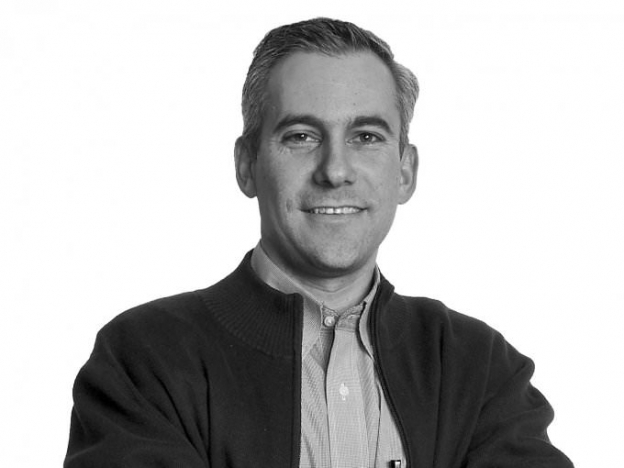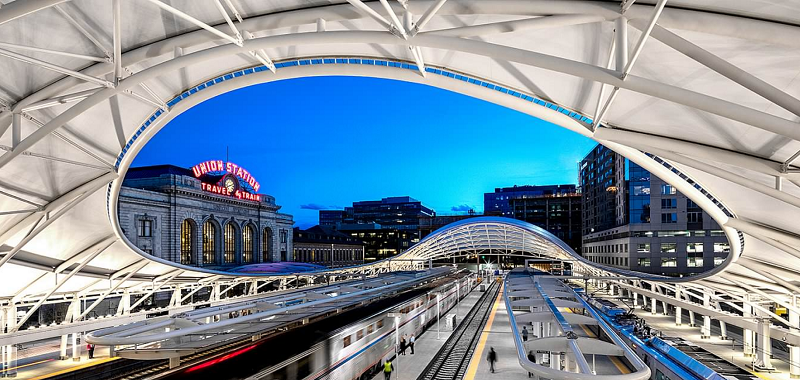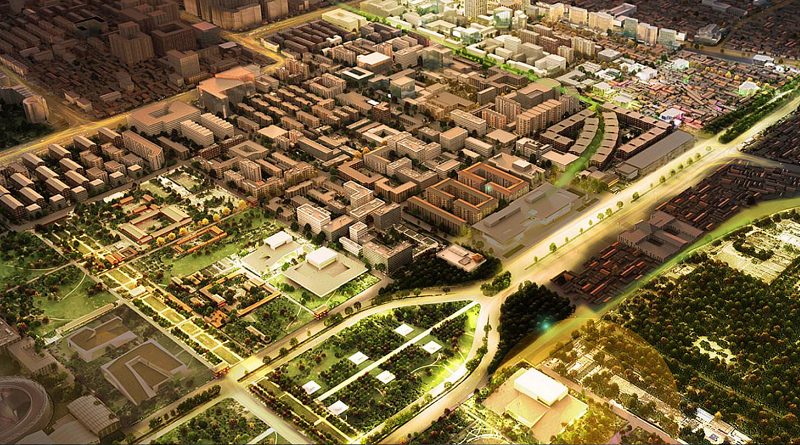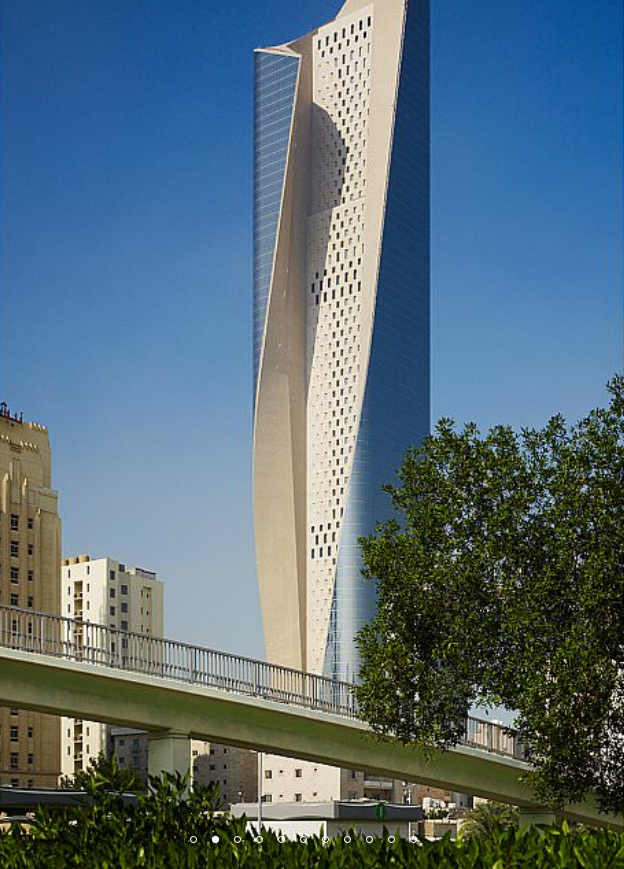Daniel Ringelstein: wow-effect in architecture is not so bad

Guest of the Moscow Urban Forum, Director of Urban Design and Planning Skidmore Owings & Merrill INC (SOM) Daniel Ringelstein leads projects aimed at the restoration of a comfortable urban environment. We asked the expert a few questions about the development of the architectural profession, methods of management of architectural activities and ambitions of architects.
— One of the topics of this forum is creating architecture of high quality. So, I’d like to ask what the most effective instruments of architecture activity control you know from the international practice?
— That’s the right question. I think it’s about understanding first and foremost — the user group that’s going to be using the project, the building, the space, whatever it is, really well; and getting to know the requirements of the space, the building, the house or whatever it may be, really well; not having any preconceive ideas when you start to make sure you’re addressing the right challenges to solve the key problem. Number two, I think, it’s about collaboration. It’s about collaborating with different people outside your own company and within your company in order to bring forward an innovative solution to the particular problem.

SOM, Arcapita Bank Headquarters, Bahrein © Andreas Keller
For example, if you design a new lecture hall for a university, engaging with the students that will be using that environment is important; understanding the faculty means, new trends in teaching, understanding new trends how students come together to work and to solve how to present the particular paper or a particular topic. Collaborative work space and collaborative learning environments are very different nowadays; many things are much more informal than they were in the past, whether being an economic environment or business environment. Standard ways of doing things need to be questioned and debated from multiple angles and influenced to drive that forward.
Another element would be making sure that the highest aspirations of sustainability are met in terms of reducing carving, reducing energy requirements for a building, locating a building in the right place so that people could get there easily, so even reduce the need to travel there in the first place by expensive means of transport, down to the system design to make sure they are used firmly but also very efficiently.

SOM, 510 Fifth Avenue Renovation and Adaptive Reuse, New York © Eduard Hueber
And the last thing, we are to champion the timeousness in our design approach by using building materials that will last and stand the test of time, not being caught up whimsical, that may in five-year time no longer be in fashion. So we need simple, elegant solutions to these problems. We need to remember that buildings and architecture are the ones that meet our criteria.
— Do you know that most buildings on our planet are constructed not by the architects? It’s a fact. The world is growing and creating new forms in absolutely chaotic way. It’s difficult for architects to influence this situation. What do you think about it?
— It’s a great question. I often think about that. I think architects need to have stronger voice. We grew up in architectural education wanting to be that star architect, to do that one incredible project to be our hallmark and landmark in the world. But I think, we as designers can solve pretty incredible complex problems, and we can bring the people together to solve these problems. So I think lack of communities in US, UK and Europe shows the same — we need to raise people’s awareness, general public awareness of those problems. You do not have to take or accept the traditional villa that a developer may give you. This is all you usually get when you get this foreplan; you get these choices that feature your personal project.

Denver Union Station © Magda Biernat
So there really need to be a bit of revolution, maybe some of info trade and developer communities that suggest taking image that people don’t know any better. So I think we could be stronger applicants for design and educating people. I see a lot of interests, in mainstream there are a lot of interests and design pictures how to upgrade your house. Public is engaged in DIY — do it yourself, fix it to your house, personalize things, so there is interest there. The question is how to make it marketable, accessible to the everyday person, to make them realize that they can make decisions to influence the quality of their space.
— What do you think about the fact that when architects build some buildings they follow the most earthbound or just false ambitions? Do you know the phrase “wow-effect”?
— That’s true. Many are driven by the formal gesture or creating a splash, we are very guilty about that. You get iconic buildings all over the world that people aspire to. And some are not so bad. For example, the “wow-effect” that comes from “Bilbao effect” which is Frank Gehry’s Guggenheim Museum. It is quite an incredible object. But the goodness of that one is that it really helped to revitalize the city of Bilbao. And that was the symbol and catalyst for the wider transformation of the city.
So in many cities they are looking for that singular thing that helps to place that city on the invention stage, which is much than a single bullet, as many things have to happen. So maybe you look at that more as catalyst, but I think there are real special projects that really call for that, and places and buildings of national pride, celebrating major events in millennium — it’s very important to mark that in many cities.

Beijing Tianqiao Performing Arts District Master Plan, China © Squint
But I think those culture buildings, museums or libraries are very important to create new symbols that are modern and contemporary vision of what’s to come, but that’s only a tiny percentage of what you need in a building, so this is more about the quality, sensible buildings that also integrate well into the city context, which means to build a “polite building” that frames the space and addresses the street in positive way. We have to build a landmark or an object that can be participating in a lot of context.
— The next question is about general planning of cities. This year the review of the general layout of Moscow was finished regarding the development on its new territories. One disconfirmed that it’s almost impossible to make any changes in these final documents. What do you think about it? How adequate is this approach towards general planning and what is the world experience in this problem?
— I don’t know much about Moscow plan; I probably should have prepared myself more. But I think it’s important for cities to lay out strategies for the future, and I think what’s happening in Moscow is agglomeration of lots of larger urban areas that come together to be recognized as a city. It’s suffering from sprawl like most western cities, in the US and other places. So the question is how to connect these places that are outline to the same center; how could you make those places that are further away from the center more diverse and self-sustaining. Great examples of bicentric cities where you actually providing places to work, and shop and go to school and universities in the outline areas, so you’re reducing by third the trips to the city center. That’s doing quite a great benefit to a wider city. So capturing people to live and work, and walk to where they need to shops, they need to have services in hospitals, and doctors; and then connecting these outline areas, which is very important. So it’s not necessary to come out of the city for something, or go to the neighboring village, or the neighboring town. That’s usually a challenge of those cities that for century have driven the economy and where everyone lives outside, and where they have this singular lines that drive people in the center. London is like that, Paris is like that, in Chicago I grew up like that. Getting these connections will lower the pressure on the center.

Baltimore Tower, London
— And the last question is again general. Architecture is very self-contained and closed profession, so architects see themselves as bearers of an exclusive knowledge. And what do think, how can you revive the extensive cultural discussion in the architecture?
— We’re easy people. This should be our bold mission. We have to get out of that solo; we have to get out of that mind-process. We are not the masters of everything. We’re better when we work together with artists, engineers and social experts to really make what we create meaningful. We’ve been challenging ourselves, we’d better engage in work artists not just to place sculptures in lobby or in a garden, but really to have them to bring the space to life and let them take over the space. And it’s amazing that they can come up with — some things you can never dream of. We have our own company of structural engineering which is driving and helping to inform practitioner forum. Working with engineers to find the most efficient means to build a building up or bridge, or other urban structures in ways that architects alone will never imagine. So I bring in engineers, artist, and landscape specialists into our teams to make our projects much richer. And I think most great architects work only in that way. Maybe the ‘old guard’ still cut in the race but most architects these days see the need to be more multidisciplinary and collaborator. It’s cool now as you get collaborations and participants that never worked before, so bringing science and art together as a good example. Any other ways universities have to catch up to that in the professions that are leading that, we need to have universities promote multidisciplinary research and bringing different aspects of urban life together. There is no programme in the world that bridge science and art together, and I think that’s a real opportunity for urbanists.

Al Hamra Tower, Кувейт © Nick Merrick & Hedrich Blessing
- Tags:
- Mosurbanforum




